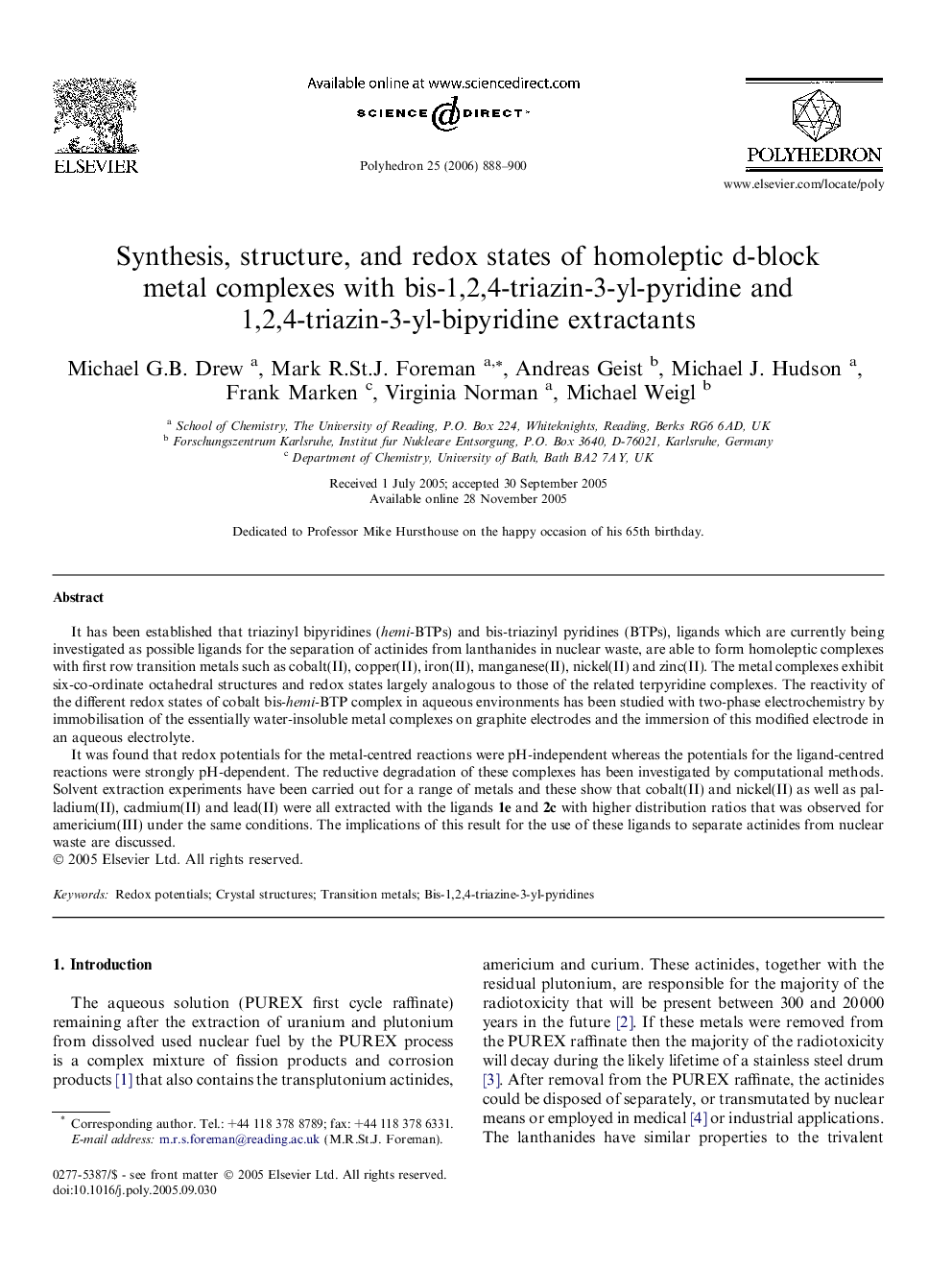| کد مقاله | کد نشریه | سال انتشار | مقاله انگلیسی | نسخه تمام متن |
|---|---|---|---|---|
| 1340889 | 979762 | 2006 | 13 صفحه PDF | دانلود رایگان |

It has been established that triazinyl bipyridines (hemi-BTPs) and bis-triazinyl pyridines (BTPs), ligands which are currently being investigated as possible ligands for the separation of actinides from lanthanides in nuclear waste, are able to form homoleptic complexes with first row transition metals such as cobalt(II), copper(II), iron(II), manganese(II), nickel(II) and zinc(II). The metal complexes exhibit six-co-ordinate octahedral structures and redox states largely analogous to those of the related terpyridine complexes. The reactivity of the different redox states of cobalt bis-hemi-BTP complex in aqueous environments has been studied with two-phase electrochemistry by immobilisation of the essentially water-insoluble metal complexes on graphite electrodes and the immersion of this modified electrode in an aqueous electrolyte.It was found that redox potentials for the metal-centred reactions were pH-independent whereas the potentials for the ligand-centred reactions were strongly pH-dependent. The reductive degradation of these complexes has been investigated by computational methods. Solvent extraction experiments have been carried out for a range of metals and these show that cobalt(II) and nickel(II) as well as palladium(II), cadmium(II) and lead(II) were all extracted with the ligands 1e and 2c with higher distribution ratios that was observed for americium(III) under the same conditions. The implications of this result for the use of these ligands to separate actinides from nuclear waste are discussed.
Cobalt(II), copper(II), iron(II), manganese(II), nickel(II) and zinc(II) form six-coordinate octahedral 1:2 complexes with triazinyl bipyridines. These metal complexes have been studied by crystallographic, electrochemical and theoretical methods.Figure optionsDownload as PowerPoint slide
Journal: Polyhedron - Volume 25, Issue 4, 6 March 2006, Pages 888–900